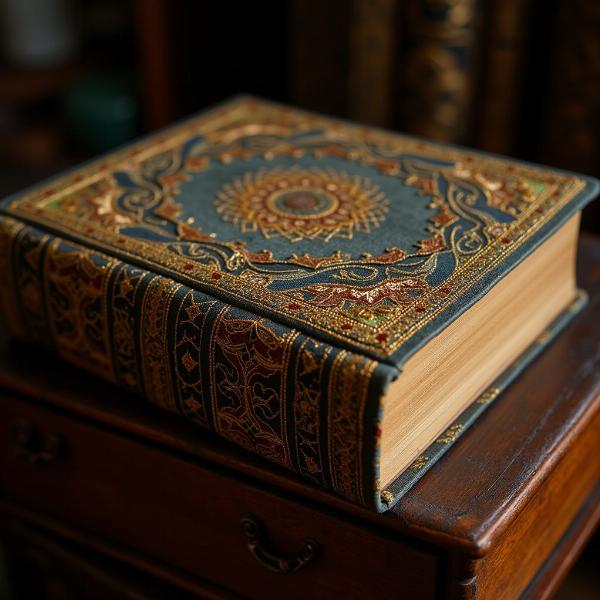Gilaf, a word often encountered in Hindi conversations and literature, carries a nuanced meaning that can be tricky to grasp for non-native speakers. Understanding the meaning of “gilaf” in Hindi opens up a deeper appreciation for the richness of the language and its cultural context. This article delves into the various meanings and usages of “gilaf,” offering clear explanations and practical examples.
Exploring the Different Meanings of Gilaf
“Gilaf” primarily translates to “cover” or “case” in English. However, its meaning can be more specific depending on the context. It can refer to a protective covering for various objects, from books and pillows to swords and electronic devices. Think of it as a shield that safeguards something valuable. Beyond its literal meaning, “gilaf” can also hold symbolic connotations, representing concealment or disguise.
 Book Cover Gilaf
Book Cover Gilaf
Gilaf in Everyday Usage
In daily conversations, you might hear “gilaf” used in a variety of situations. For example, someone might say, “Mera phone gilaf mein hai” (My phone is in its case). Or, when referring to a pillow, they could say, “Takिये ka gilaf badal do” (Change the pillowcase). These examples illustrate the practical application of “gilaf” in describing everyday objects and their coverings.
Symbolic Meanings of Gilaf
Beyond its literal meaning, “gilaf” can also be used metaphorically. In literature and poetry, it can symbolize hiding one’s true feelings or intentions. Imagine a character who puts on a “gilaf” of politeness to conceal their anger. This symbolic usage adds depth and complexity to the word, showcasing its versatility in expressing abstract concepts.
Gilaf and its Cultural Significance
In some Indian traditions, decorative “gilaf” are used for religious texts or sacred objects. These elaborate coverings often feature intricate embroidery and embellishments, demonstrating the respect and reverence held for these items. This cultural practice highlights the importance of “gilaf” not just as a protective layer but also as a symbol of veneration.
Differentiating Gilaf from Similar Words
While “gilaf” is commonly translated as “cover,” it’s important to distinguish it from other Hindi words with similar meanings, such as “dhakkan” (lid) or “chaadar” (sheet). “Gilaf” usually refers to a fitted or tailored cover, while “dhakkan” implies a covering for a container, and “chaadar” refers to a larger, more general covering.
Conclusion: Unveiling the Meaning of Gilaf
Understanding “gilaf meaning in Hindi” enriches your grasp of the language and its cultural nuances. From its practical use in describing everyday objects to its symbolic representation of concealment, “gilaf” adds a layer of depth to communication. This exploration of its various meanings and applications provides a comprehensive understanding of this versatile Hindi word.
FAQ:
-
What is the most common translation of “gilaf” in English?
The most common translation of “gilaf” is “cover” or “case.” -
Can “gilaf” be used metaphorically?
Yes, “gilaf” can be used metaphorically to represent concealment or disguise. -
How is “gilaf” used in Indian culture?
In some Indian traditions, decorative “gilaf” are used for religious texts or sacred objects. -
What is the difference between “gilaf” and “dhakkan”?
“Gilaf” refers to a fitted cover, while “dhakkan” refers to a lid or covering for a container. -
What is the difference between “gilaf” and “chaadar”?
“Gilaf” refers to a fitted cover, while “chaadar” refers to a larger, more general covering, like a sheet.
About Meaning-Hindi.in: Meaning-Hindi.in provides high-quality Hindi translation services for a variety of needs, from business and legal documents to technical manuals and website localization. We pride ourselves on our accuracy, cultural sensitivity, and commitment to delivering exceptional results. Whether you need document translation, website localization, or specialized language services, our team of expert linguists is here to help. Contact us today for a free quote at [email protected] or call us at +91 11-4502-7584.